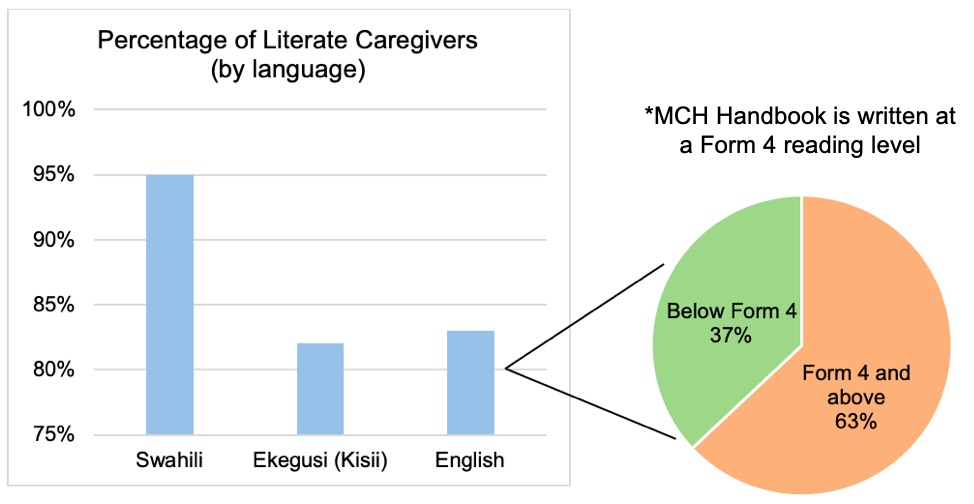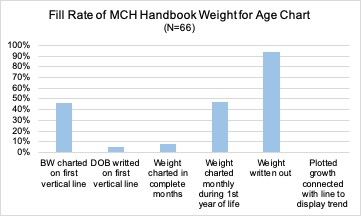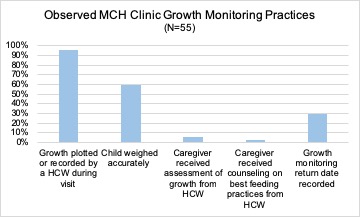Global Neonatal & Children's Health 2
Session: Global Neonatal & Children's Health 2
737 - Empowering Growth: Caregiver and Healthcare Worker Practices in Utilizing the Mother and Child Health Handbook for the Growth Monitoring of Children Aged 0-5 years in Kisii, Kenya.
Friday, April 25, 2025
5:30pm - 7:45pm HST
Publication Number: 737.4753
Malika Waschmann, Seattle Children's, Seattle, WA, United States; Mitchel N. Opaka, The University of Nairobi, MOMBASA, Coast, Kenya; Ruth Nduati, University of Nairobi, Nairobi, Nairobi Area, Kenya; Suzinne Pak-Gorstein, University of Washington School of Medicine, Seattle, WA, United States
- MW
Malika Waschmann, MD (she/her/hers)
Resident Physician
Seattle Children's
Seattle, Washington, United States
Presenting Author(s)
Background: Growth monitoring is a critical practice in Kenya for preventing and identifying severe acute malnutrition (SAM). Accurate identification of SAM depends on precise weight and height measurements, coupled with correct charting in mother and children health (MCH) handbook growth charts. The MCH handbook provides guidance on optimal feeding practices for children under five, aiming to combat malnutrition. Despite Kisii’s fertile environment, malnutrition remains a significant pediatric health issue, highlighting the importance of adequate SAM detection and prevention.
Objective: A mixed-method study was conducted to evaluate the knowledge, attitudes, and practices of caregivers and healthcare workers in using the MCH handbook for growth monitoring of children 0-5 years in Bomachoge Borabu sub-county, Kisii County.
Design/Methods: 66 caregiver-child dyads and 16 healthcare workers were recruited from two healthcare settings, Kisii Teaching and Referral Hospital and Kenyenya Sub-County Hospital. The study employed caregiver questionnaires, assessment of growth chart completion, focus groups with caregivers and healthcare promoters, and key informant interviews with medical officers, nutritionists, and MCH nurses. Quantitative data were analyzed using Excel; qualitative data was analyzed using thematic analysis.
Results: Demographic surveys revealed that only 54% of caregivers possessed the latest edition of the government-issued MCH handbook, and just 63% had the English literacy required to comprehend it. Observations in two MCH clinics showed that healthcare providers never charted growth accurately according to CDC guidelines and seldom offered caregivers assessments of their child’s growth or anticipatory guidance on feeding practices. All groups recognized the MCH handbook as a valuable tool for tracking health information and providing health education, but HCWs desired formalized training around its use and caregivers expressed the handbook design felt inaccessible to them.
Conclusion(s): Community-drive recommendations included provision of formalized education for all HCW on the use of the handbook and improved supply of handbooks themselves. The community also suggested more caregiver education about the handbook in the form of barazas, caregiver group clinic visits for group counseling, and fostering an expectation that HCWs explain their assessments of child growth and provide anticipatory guidance on feeding practices at clinic visits. All stakeholders suggested handbook improvements including translation to Kiswahili, enhanced graphics, and tailored recommendations targeting lower SES families.
Caregiver Literacy by Language
 The majority of caregivers surveyed reported being able to read Swahili; fewer reported being able to read Ekegusi or English. When considering highest level of education and extrapolating English literacy level, only 63% of caregivers were able to read and comprehend English at a Form 4 reading level. This is significant as the MCH handbook with education sections intended for caregivers is written at a Form 4 reading level.
The majority of caregivers surveyed reported being able to read Swahili; fewer reported being able to read Ekegusi or English. When considering highest level of education and extrapolating English literacy level, only 63% of caregivers were able to read and comprehend English at a Form 4 reading level. This is significant as the MCH handbook with education sections intended for caregivers is written at a Form 4 reading level. MCH Handbook Weight for Age Chart Fill Rate
 The fill rates of 66 MCH handbooks were assessed using CDC criteria. No single handbook was filled our correctly based on all six criteria. Weight was consistently written out, but much less likely to be plotted in complete months or be connected by a line between measurements to display a trend.
The fill rates of 66 MCH handbooks were assessed using CDC criteria. No single handbook was filled our correctly based on all six criteria. Weight was consistently written out, but much less likely to be plotted in complete months or be connected by a line between measurements to display a trend.Observed MCH Clinic Growth Monitoring Practices
 Fifty-five interactions between caregivers and healthcare workers were observed during growth monitoring encounters at MCH clinics. While weighing of the child consistently occurred, healthcare workers rarely shared their assessment of the child's growth with the caregiver, advised the caregiver regarding best feeding practices, or recorded next return date for growth monitoring in the MCH handbook.
Fifty-five interactions between caregivers and healthcare workers were observed during growth monitoring encounters at MCH clinics. While weighing of the child consistently occurred, healthcare workers rarely shared their assessment of the child's growth with the caregiver, advised the caregiver regarding best feeding practices, or recorded next return date for growth monitoring in the MCH handbook. 
